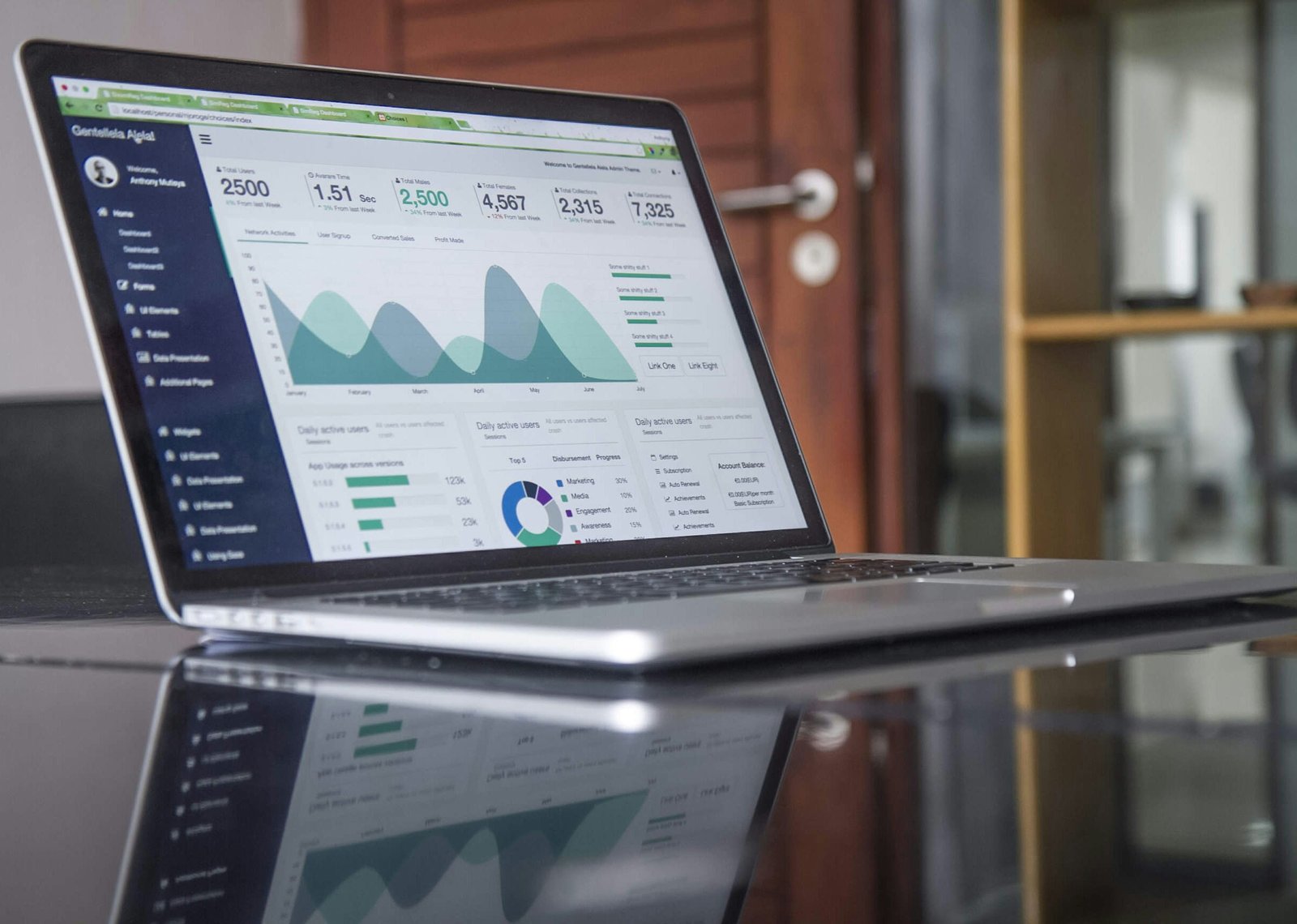How B2B E-commerce Short-Copy ‘Squeeze’ Pages Can Drive Massive Leads and Sales
Introduction to B2B E-commerce Short-Copy Squeeze Pages
In the realm of digital marketing, the effectiveness of short-copy “squeeze” pages has increasingly gained recognition, particularly within the B2B e-commerce sector. A squeeze page is a type of landing page designed to capture essential visitor information, such as email addresses, through concise and compelling copy accompanied by persuasive call-to-action (CTA) elements. This simple yet strategic approach aims to convert visitors into potential leads by offering immediate value in exchange for their contact information.
Unlike their B2C counterparts, which often cater to individual consumers’ immediate desires, B2B squeeze pages specifically target corporate decision-makers. These individuals are typically part of a longer decision-making process, where the stakes are higher, and the purchase cycles are extended. Consequently, the messaging on a B2B squeeze page is refined to address not just the needs of the company but also the specific professional challenges and goals of these decision-makers. This precision is essential for capturing attention in a crowded marketplace.
The efficacy of B2B squeeze pages lies in their ability to quickly gather vital information from prospects while laying the groundwork for future engagement through targeted content. By minimizing the amount of copy, these pages reduce the cognitive load for visitors, allowing them to make swift decisions about providing their contact details. Coupled with a powerful value proposition and clear CTAs, a well-crafted B2B squeeze page can drive substantial lead generation.
Moreover, once these leads are captured, B2B marketers can leverage the gathered information to curate content that nurtures these prospects through personalized email campaigns and follow-up strategies. This targeted approach not only enhances the customer journey but also aligns with the more complex needs inherent in B2B transactions.
Key Elements of an Effective B2B E-commerce Short-Copy Squeeze Page
An effective B2B e-commerce short-copy squeeze page hinges on several critical components that work in harmony to capture leads and drive sales. First and foremost, the headline must be compelling, directly addressing the visitor’s pain points or a specific problem they are seeking to solve. A well-crafted headline grabs attention immediately, setting the stage for the content that follows. It should be concise, clear, and impactful.
The body copy, though short, needs to be incisive and persuasive. The goal is to provide just enough information to spark interest without overwhelming the visitor. Focus on the benefits rather than the features, highlighting how your product or service can address their specific needs. Clear, succinct language that speaks directly to your target audience will keep them engaged.
A strong and focused call-to-action (CTA) is crucial. The CTA should stand out visually and communicate exactly what the visitor should do next. Use action-oriented language and create a sense of urgency where appropriate. For example, “Get Your Free Trial Now” or “Download the Exclusive E-book Today.” This prompts immediate action, increasing the likelihood of conversion.
The design of the squeeze page must be clean and uncluttered to facilitate easy navigation. A minimalist layout ensures that the key messages and CTAs are easily identifiable. Additionally, optimizing the page for mobile users is essential. With an increasing number of visitors accessing content via mobile devices, a responsive design guarantees a seamless user experience across all screens.
Incorporating social proof such as testimonials, client logos, or case studies can significantly bolster credibility. Visitors are more likely to trust and engage with your offering when they see evidence of its effectiveness from other reputable sources.
Finally, enticing the visitor to provide their contact information requires offering something of value in return. This could be a free e-book, a trial, or an exclusive invitation to a webinar. The perceived value of the offer should be high enough to justify the exchange of information, making the visitor feel that they are gaining something worthwhile.
To maximize lead conversion on B2B e-commerce short-copy squeeze pages, employing a multifaceted approach is essential. A/B testing serves as a cornerstone strategy, as it allows for the refinement of various page elements. By conducting A/B tests on headlines, CTAs (call-to-actions), and form fields, marketers can determine which combinations resonate most effectively with their audience. For instance, testing different headline variations can reveal which verbiage incites greater interest. Similarly, experimenting with the placement and wording of CTAs can substantially impact conversion rates.
Personalizing the user experience through segmentation and targeting is another crucial tactic. By categorizing your audience into distinct segments based on criteria such as industry, company size, and role, you can create more relevant content for each group. For example, a landing page tailored for decision-makers in the technology sector should differ from one targeting mid-level managers in manufacturing. Through segmentation, the squeeze page can present personalized offers and content that resonate more with each specific audience, enhancing engagement and likelihood of conversion.
Leveraging analytics is also pivotal. Employing tools like Google Analytics or specialized B2B platforms allows marketers to track visitor behavior accurately. Monitoring metrics such as time spent on the page, bounce rates, and click-through rates provides invaluable insights, enabling data-driven optimization. Regularly analyzing this data can uncover patterns and highlight areas for improvement, such as simplifying the form fields or adjusting the CTA placement.
Further, tactics like creating a sense of urgency or scarcity can drive quicker responses. Limited-time offers or highlighting low stock levels can persuade visitors to act promptly rather than delaying their decisions. Phrases like “offer ends soon” or “only a few left” can make the difference between a lead conversion and a missed opportunity.
Lastly, the focus should remain on driving high-quality, relevant traffic to the squeeze page. Employing targeted advertising campaigns, harnessing the power of SEO, and leveraging social media channels can attract a qualified audience more likely to convert into leads. By combining these strategies, you can create an optimized B2B e-commerce squeeze page that effectively drives massive leads and sales.
Case Studies and Success Stories
Real-world examples serve as powerful testament to the effectiveness of B2B e-commerce short-copy squeeze pages. One illustrative case involves a mid-sized manufacturing company facing stagnant lead generation. They adopted a concise, yet compelling squeeze page strategy, pivoting from lengthy descriptions to succinct, persuasive messaging. By focusing on clear value propositions and a singular call-to-action, they increased lead capture by 40% within six months. The primary challenge was initially crafting compelling short copy that conveyed the necessary information without appearing overly terse. Continuous A/B testing refined their approach, enhancing both engagement and conversion rates.
In another instance, a B2B SaaS provider leveraged short-copy squeeze pages to revitalize their sales funnel. Plagued by high bounce rates on product pages, they implemented targeted short-copy squeeze pages tailored to different buyer personas. These pages highlighted pain points directly addressed by their solutions and incorporated client testimonials to build trust. By distilling their offerings into digestible, impactful messages, they reduced bounce rates by 25% and boosted qualified leads by 50% within four months. The strategy involved careful persona analysis to ensure relevance and authenticity in every message.
A financial services firm also experienced significant success with short-copy squeeze pages. Previously relying on lengthy, jargon-heavy content, they shifted to clear, concise copy that highlighted key benefits and guarantees. The revised pages prominently featured a straightforward call-to-action, prompting potential clients to request consultations. This approach resulted in a 35% increase in consultation requests and a notable improvement in client acquisition rates. The challenge lay in simplifying complex financial concepts without diluting the message, achieved through meticulous editing and customer feedback loops.
These varied examples underscore the versatility of B2B e-commerce short-copy squeeze pages across industries. Key takeaways include the importance of clarity, relevance to the target audience, and continuous optimization through testing. The measurable impacts—ranging from increased leads to enhanced sales conversions—demonstrate the lasting benefits of well-crafted short-copy squeeze pages. Businesses aiming to optimize their lead generation can adapt these best practices to suit their unique contexts, driving substantial growth and sustainable success.







